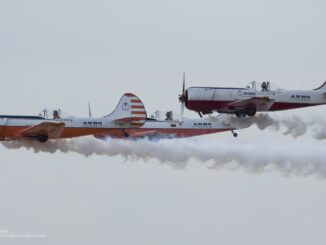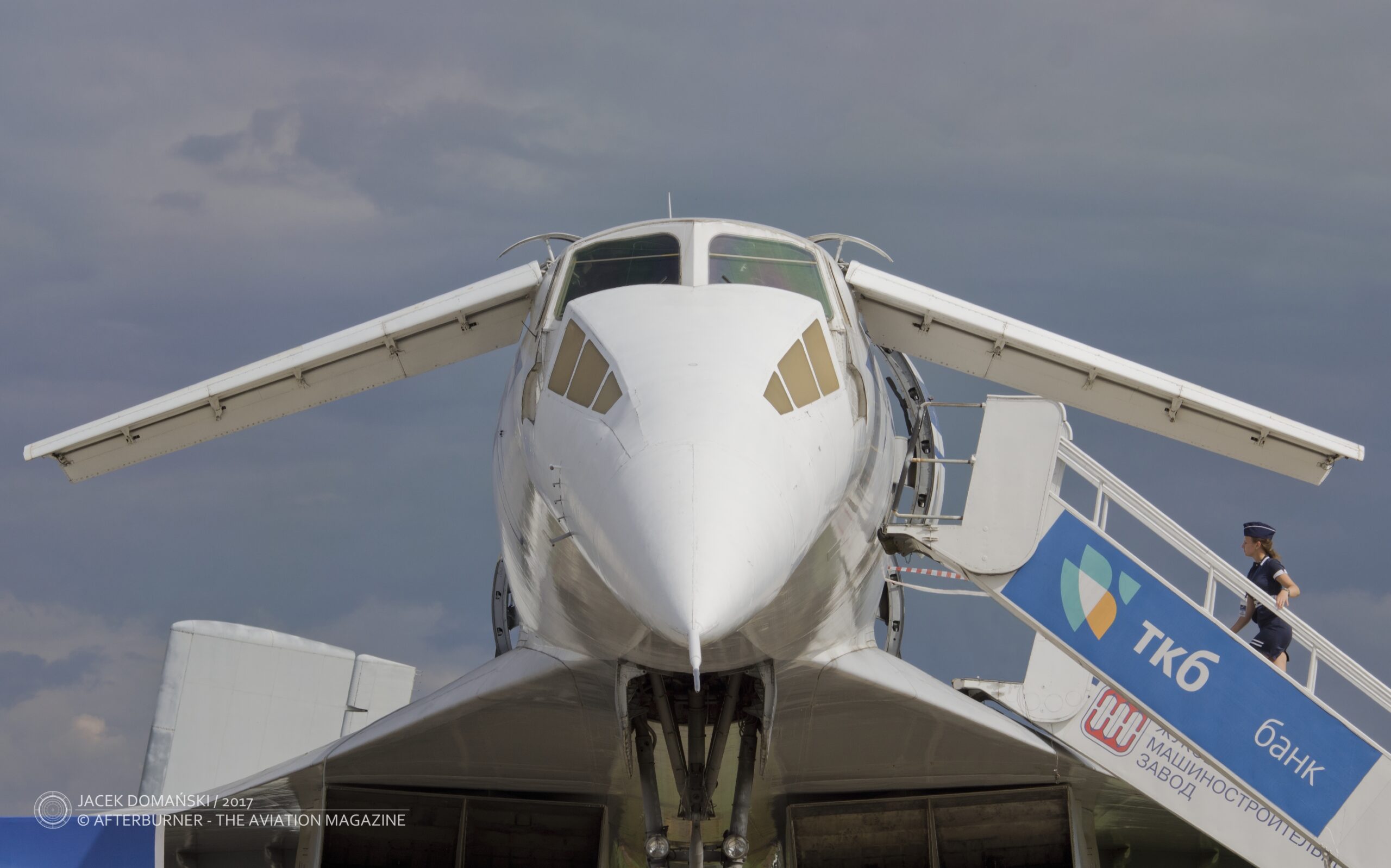 On 15th November 1957, the Soviet long-haul passenger airliner Tupolev Tu-114, performed its maiden flight.
On 15th November 1957, the Soviet long-haul passenger airliner Tupolev Tu-114, performed its maiden flight.
In August of 1955, in response for market demand, Совет министров СССР (the Council of Ministers of the Soviet Union) issued a directive No. 1561-868 on creation of the new long-haul passenger airliner. This task was then assigned by Министерство авиационной промышленности СССР (Ministry of Aviation Industry of the USSR) to ОКБ «Туполев» (Tupolev Design Bureau), following the order no. 571.
At that time, the Tupolev bureau was focused on developing heavy strategic bomber aircraft, including Tu-16 and Tu-95, which performed their first flights in April and November of 1952, respectively.
In 1954, Tupolev began to work on medium-range jet passenger aeroplane based on the Tu-16. The development was successfully concluded in June of 1955, with the first flight of Tupolev Tu-104. One year later, the aircraft commenced its regular service, becoming the second passenger jet in the world, after de Havilland Comet (more information about the first Soviet jetliner in our article from Photo of the Week series – Tupolev Tu-104A)
In a short time, due to safety issues with the British jet, the Tu-104 became the only operational jetliner in the world and kept this position until 1958.
Although it was already clear the future would belong to jet airliners, the Tupolev bureau chosen a different path while developing its long-haul aircraft. In order to avoid issues related with early jetliner designs and their complicated introduction into market, the team led by Н. И. Базенков (N.I. Bazenkov) had put on already proven solution – the four-engine turboprop aircraft, based on the Tu-95 design.
The new project was initially designated Tu-95P but also had a company designation ´Aeroplane 114´. Later, the second number was adopted as the airliner official designation, the Tupolev Tu-114.
Although generally based on the Tu-95 airframe, the airliner was designed as low-wing monoplane with enlarged fuselage. This, together with huge contra-rotating propellers forced the construction team to use an unusually high landing gear. It made the Tu-114 significantly higher than other airliners of the era and created additional challenges during its operational service.
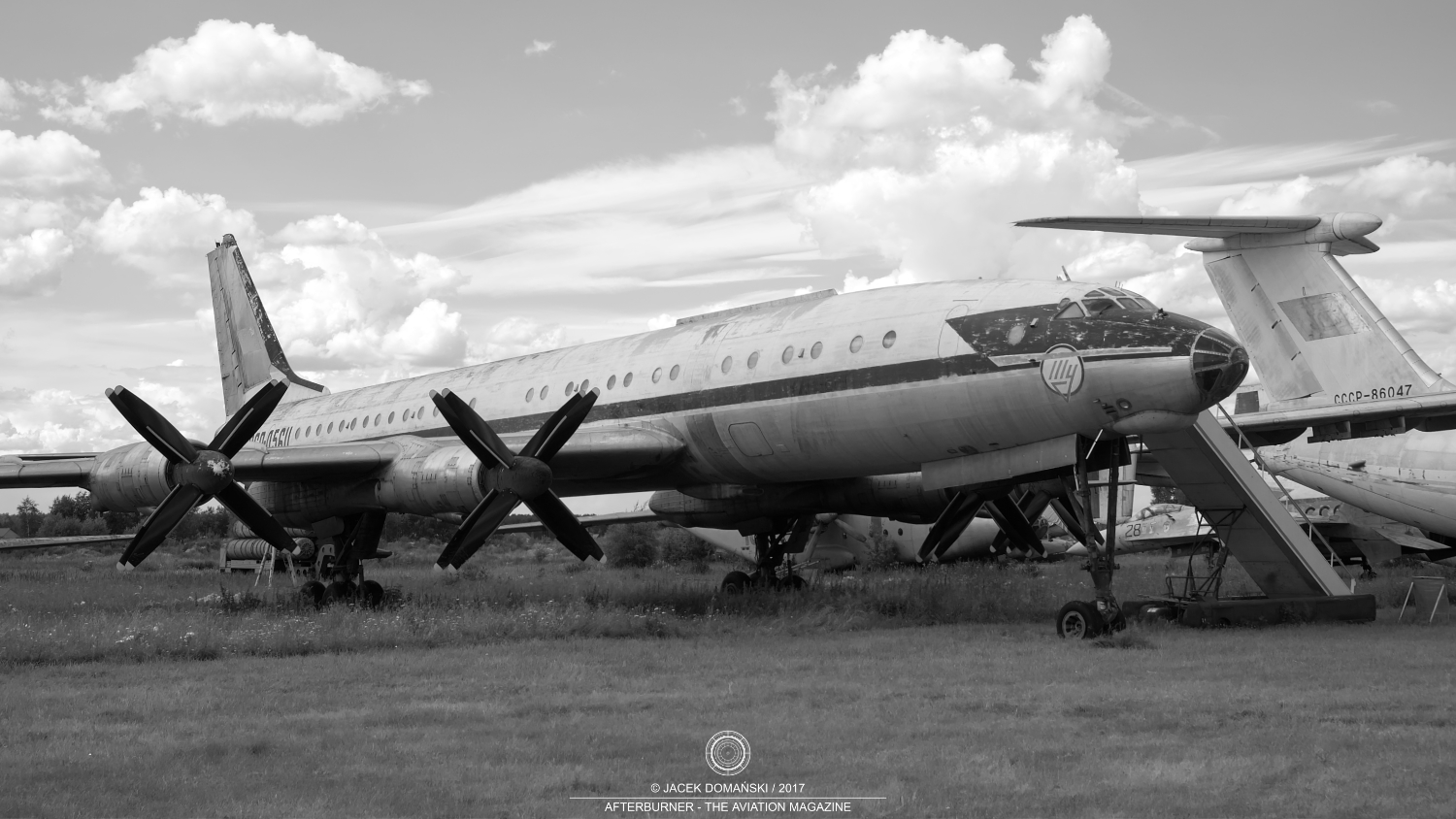
On 15th November 1957, approximately two years since its development was launched, the Tu-114 ´Moscow´ performed its maiden flight, operated by a test crew led by А. П. Якимов (A.P. Yakimov).
In 1959, the new Soviet long-haul airliner was introduced into market, although initially it performed only demonstration flights. In May of that year, the aircraft flew from Moscow to Khabarovsk, carrying on board aviation specialist. Then, the Tu-114 made a flight to New York with the official Soviet delegation to Выставка достижений Советской науки, техники и культуры (The exhibition of the achievements of Soviet science, technology and culture) which opened there on 29th June 1959.
Regular commercial operations of the Tu-114 began only on 24th April 1961. The service began with domestic routes but soon the national Soviet carrier, Aeroflot, started to successively enhance the Tu-114 operations with international destinations, such as Belgrade, Copenhagen, Havana, Montreal, New Delhi, Paris and Tokyo.
Interesting fact is that flights to Havana required a stopover and soon that fact caused a cat-and-mouse game between the US and Soviet authorities. Initially, the Tu-114 had scheduled stopovers in Guinea, using the Konakri airport built by the Soviet construction team. Then, under the pressure from the United States, the Guinean government closed the airfield for operations of aircraft over 150 tons.
In consequence, the Soviet airliners began to fly through Dakar, in Senegal. Then, the situation repeated, and Dakar was closed for the Tu-114. Eventually, the Aeroflot flights to Havana were performed via the northern route, with stopover in Olenegorsk, Murmansk region.
Another peculiarity is that, during their transatlantic flights, the Tu-114s were sometimes shadowed by the Tu-95 strategic bombers.
The Tupolev Tu-114 concluded its regular service on 2nd December 1976. The last scheduled flight was performed on Moscow-Khabarovsk route. At that time, the majority of the aircraft reported cracks on the engine panels. However, no repairs were made, and such airliners were just retired from active duty. The time of long-haul, propeller-powered aeroplanes was already gone and the Tu-114 was shortly replaced with new, four-engine jetliner, Ilyushin Il-62.
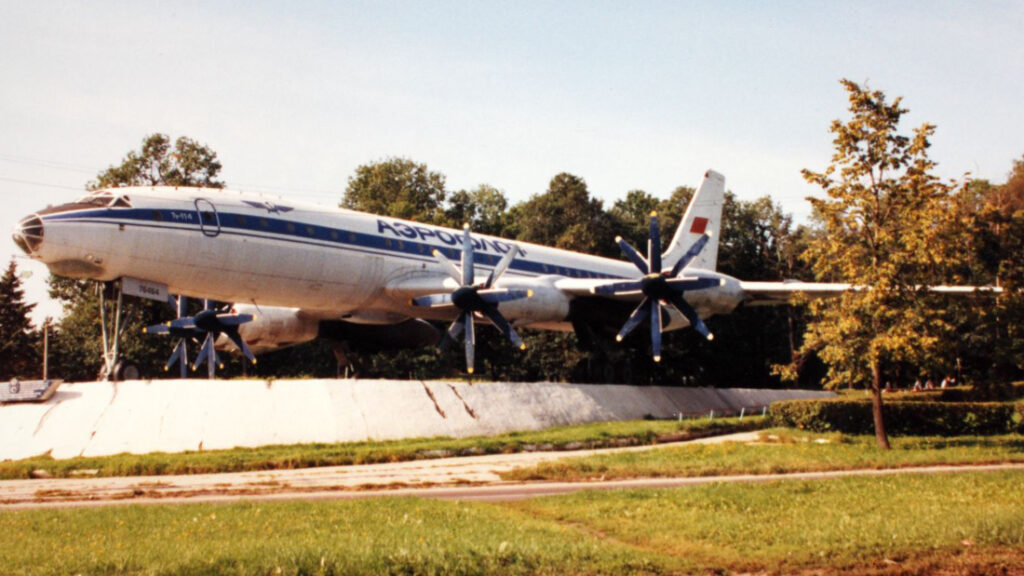
Although the time of the Tu-114 operational service was relatively short, the aircraft well played its part in the development of the Soviet long-haul passenger aviation by carrying more than six million passengers, as well as marked the history of aviation.
At the time of its introduction to operational service, the Tu-114 featured several unique characteristics, such as the most powerful turboprop engines used in passenger aircraft (four Kuznetsov NK-12MV, each generating 14,795 hp), lower deck galley and crew rest area and the aforementioned the highest landing gear of approximately three metres. Similarly to other long-haul airliners of the era, the Tu-114 offered onboard restaurant and sleeping compartments.
In addition, the Tu-114 set several world records in maximum speed on a closed circuit and altitude with payload of 25 to 30 tonnes categories. All those records stand until today, as the then existing Group 2 (turboprop) was later discontinued and split in several sub-groups.
For many years, the Tu-114 held the title of the fastest propeller-driven aircraft in the world. On 24th March 1960, the aeroplane achieved the speed of 871.38 kph (541.45 mph) on a 1,000-kilometre closed circuit. This record was broken only in 2003 by Piaggio P.180 Avanti (927.4 kph / 576.3 mph over a recognized course). Nonetheless, one should take into account the maximum take-off weight of both aircraft. The MTOW of the P.180 is only 5,488 kg and is approximately an equivalent of the weight of two NK-12MV engines (dry, without propellers), while the MTOW of the Tu-114 was 171,000 kg.
About ten further aircraft were developed on basis of the Tu-114, including a long-range passenger version for non-stop flights, reconnaissance and maritime patrol aeroplanes, as well as a cruise missile carrier. However, none of them was approved for serial production (the two existing Tu-116 aeroplanes used for the Soviet official government transport, often indicated as a variant of the Tu-114, were converted from the Tu-95 bombers and not related to the airliner).
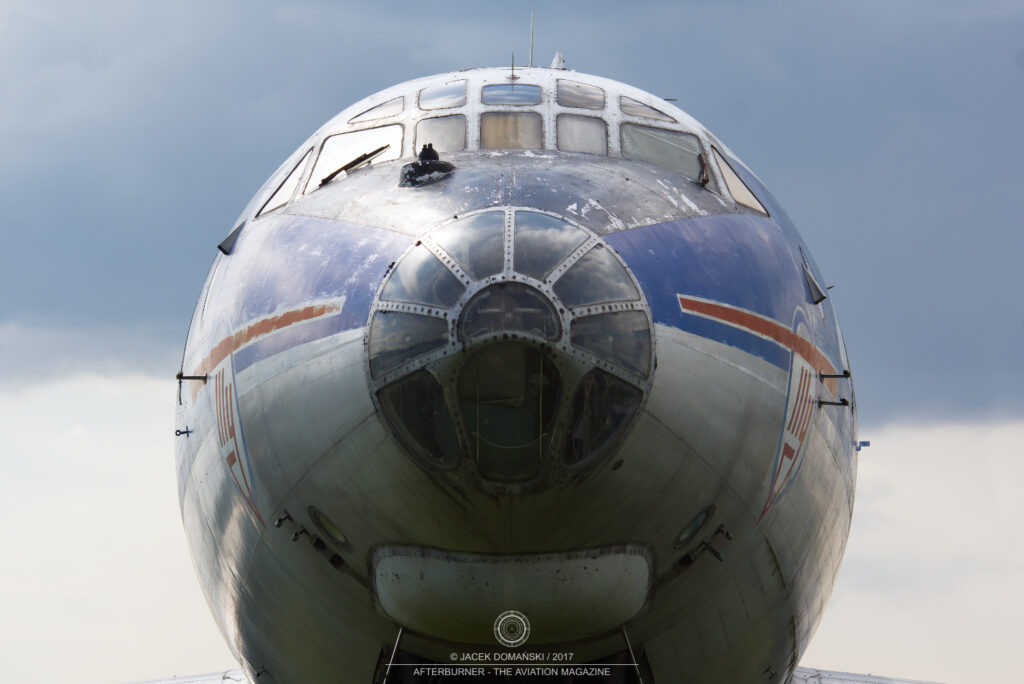
Cover photo: Tupolev Tu-114 (San Diego Air and Space Museum Archive, 01_00089167 via Flickr Commons)

